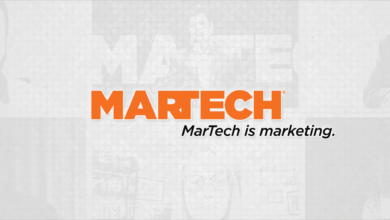Why 2025 is the year of martech optimization, not expansion

The uncertain economic landscape presents a challenge for marketers: how to invest in technology that drives results while navigating frozen or reduced budgets.
The answer? 2025 is not the year of bold leaps to expensive platforms, but the time of strategic caution. With AI promising to revolutionize marketing but its impact still uncertain, the focus should be on optimizing existing systems and preparing for an AI-driven future.
Here’s how to make 2025 the year of smart, strategic martech decisions.
Why conservative budgeting makes sense for martech in 2025
Is your technology budget frozen or reduced for next year? You are not alone. Due to economic uncertainty, most businesses are cautious about spending and taking a conservative budgeting approach.
Normally I would bemoan spending limits, but this year is different. We are at a pivotal moment in the evolution of marketing technology.
On the one hand, many companies, especially in the B2B sector, are finding that their traditional programs and technologies are no longer delivering the expected results. On the other hand, AI is emerging and could potentially reshape marketing, although its full impact is not yet clear. The path ahead is murky, so proceed with caution.
2025 is not the time to spend big on traditional martech, especially on expensive platforms like marketing automation, email, or CDPs. These tools require training and long-term investment to be profitable, and there is a high risk that they will quickly become obsolete.
Dig Deeper: AI is poised to shake up the world of Martech providers and users
Building the foundations for AI adoption in 2025
2025 is expected to be a foundational year that sets the stage for AI adoption and growth. You will need to do the following.
Prune and optimize existing martech tools
Streamline and optimize your current technology to ensure it maximizes value and aligns with your business and marketing goals. This will free up resources to explore new AI-based technologies.
Lock in your Phase 1 AI strategy
Define your use case priorities and assess your internal skills against what is needed to implement your AI use cases. Determine a training and hiring plan to ensure you can translate your strategy into action.
Up to 72% of U.S. CEOs say genAI is a top investment priority despite uncertain economic conditions, according to KPMG Research. Now is the time to explore generative AI and other AI-based technologies. Establish guardrails to ensure that everything you do with AI follows clear usage and compliance guidelines.
Document your data architecture and governance plan
Make sure you have quality data that can be used by the AI solutions you develop or implement. Until 70% of leaders found data quality to be their biggest challenge when trusting AI for their business success, according to a recent Zenhub survey.
You may need to acquire data management technology to manage the integrity and governance of your data. Half of governments worldwide will regulate the use of AI by 2026, says Gartner’s predictionso make sure you have a compliance framework in place. Data management is the area where technology investments will make sense in the coming year.
Experimenting with AI: opportunities and challenges
Although AI in marketing is still in its infancy, companies are rapidly evolving and experimenting with AI-powered content generation, chat assistants, and search interfaces. According to BCG:
“AI-mature companies generate 72% of their AI value in core functions such as operations, marketing and sales… Among companies that are being transformed by AI, 68% have already reshaped their games in motion, transforming their support functions with AI before. move on to the basic functions essential to their industry.
Early use cases for AI are focused on process automation, efficiency, content generation, and improving customer experience. These use cases are all aimed at enhancing and enhancing current operations.
Experimentation is essential when implementing new AI applications and solutions. Early experiments may fail, but it is an iterative process to ensure systems are properly trained and produce the right results.
Mary K. Pratt writing:
“Consider some numbers from the 2024 “Scaling AI Initiatives Responsibly” report, published by research firm IDC. The study found that organizations with mature AI practices – dubbed AI Masters – still have a 13% failure rate on average. Those considered AI emerging have an even higher failure rate, at 20%. There are multiple reasons for these failure rates, according to the report and many executive advisers. The reasons range from poor data quality to cultural aversion to using AI.
Dig Deeper: AI Readiness Checklist: 7 Key Steps for Successful Onboarding
AI in Action: Revmatics Case Study
In the near future, we will see AI-based products in familiar categories offering better performance through advanced algorithms and data processing. For example, I spoke with Ricky Ray Butlerfounder of Revmatics, an AI-powered ABM platform to optimize B2C conversions. Given Butler’s extensive experience in media and AI, his decision to create this product piqued my interest.
Revmatics can be categorized as ABM because it focuses on creating personalized experiences at scale. Its first product, Revmatics CRO, aims to increase the ROI of media spend. As audience fragmentation increases, reaching and converting new customers has become more difficult and expensive. Revmatics addresses these challenges by using AI-driven personalization to create high-converting personalized landing pages quickly and at scale.
The platform uses real-time factors, such as location, device type, referring platform and user behavior, to generate millions of personalized landing page variations dynamically in minutes . Key features include:
Multivariate testing for continuous optimization. Advanced bot detection to ensure clean, actionable data.
Butler claims this tool delivers 15-50% improved conversion rates by learning and adapting over time.
The tool generated 1.2 million custom branded landing page variations in just 15 minutes, tailored to 10 people across three time periods (breakfast, lunch, dinner) and covering more than 41,000 ZIP codes in the states -United. The result was highly targeted messaging, increased conversions, and a 19% lower cost per acquisition – scalability and efficiency only possible through AI.
Although Revmatics falls into the traditional ABM category, its speed, scale, and level of customization sets it apart from existing platforms. This could lead to an evolution or division of the category itself. The uncertain future of major suppliers in this area highlights the need for prudent investment decisions.
Avoiding the hype: why AI products require more than genAI
There is a misconception that products can simply be “AI-ified” by integrating existing genAI models like OpenAI, Gemini or Anthropic. Adding a genAI chatbot can improve a platform, but it won’t transform a product to deliver the speed, efficiency, and accuracy that AI promises. As Butler says: “You can’t sprinkle AI on an existing product like hot sauce. »
To fully utilize AI, products must be built from scratch using various models and supported by AI scientists and engineers. Some providers will adapt to this challenge, while others will fall behind.
This is complex and expensive work, which explains the significant investments in AI-related businesses. In 2023 alone, generative AI startups raised $21.8 billion in 426 deals, according to CB Previews. Although generative AI products have seen tremendous growth, most of the improvements made so far aim to do what we already do: simply faster and, in many cases, better.
Dig Deeper: AI is a game changer, but not generative AI
The future of martech: innovation amid uncertainty
We are still in the early stages of this transformative cycle of innovation. Just as we couldn’t predict the impact of the Internet, increased bandwidth, or smartphones, we can’t yet predict how AI will completely reshape marketing and other functions.
However, tools like Revmatics offer a glimpse of the future, in which personalized experiences at scale could replace today’s static websites, tailoring each interaction to the visitor’s unique needs and interests. This vision, long a goal for marketers, is now becoming achievable thanks to AI.
For marketers, the coming years will be a mix of challenges and opportunities. Reliable programs may no longer provide predictable results as new AI-based technologies emerge for experimentation.
The main challenge will be to balance the pressure of achieving targets with the need to test innovative approaches. Success in 2025 will depend on building a solid foundation that supports experimentation. This should be a top priority.
Contributing authors are invited to create content for MarTech and are chosen for their expertise and contribution to the martech community. Our contributors work under the supervision of the writing and contributions are checked for quality and relevance to our readers. The opinions they express are their own.



